
Pin on Dental stuff
Most dogs have 28 deciduous teeth and 42 permanent teeth. The deciduous teeth begin to erupt at 3 to 5 weeks of age, while permanent teeth usually begin to appear at around 4 to 5 months. All permanent teeth are present by the time the dog reaches 7 months of age ( See table: Canine Adult Dentition ).

Primary Dentition News Dentagama
The deciduous teeth are the primary teeth that first erupt in babies and are more commonly known as milk teeth. In this article, the general anatomical information about the deciduous teeth will be discussed, following a chronological list of when the milk teeth erupt and when they fall out.

Canine Dental Chart Dog Dental Chart (with pictures) The Canine Expert
A chart is a diagrammatic representation of the teeth showing all the surfaces of the teeth. The charts in the examination will be used to show: Teeth present Teeth missing Work to be carried out Work completed Surfaces with cavities and restorations etc. When charting, the mouth is looked on as being a flat line.

Screenshots Animal Dental Chart
Deciduous Teeth vs. Permanent Teeth. Compared to permanent teeth, deciduous teeth are rounder and whiter. There are also only 20 deciduous teeth but 32 permanent teeth. As the permanent teeth develop under the deciduous teeth, they grow upwards and resorb, or eat away, the tooth roots of the baby teeth. As the deciduous teeth roots resorb with.

Deciduous Teeth Human Tooth Diagram Chart PNG, Clipart, Anatomy, Aqua
Capital letters A-T are used to identify deciduous teeth where the letter A is used for the upper first tooth at the right side while T would be the last tooth on the lower right side.

Permanent Teeth Eruption Schedule Parenting Patch
Deciduous teeth is the official term for baby teeth, milk teeth, or primary teeth. Deciduous teeth start developing during the embryonic stage and then commonly begin to come in about 6.

Primary Teeth Chart With Letters
Humans have two sets of teeth during their lifetime: the initial deciduous (primary) teeth and the successive permanent (secondary) teeth.[1] There are typically 20 deciduous teeth divided evenly across the maxilla and mandible. The deciduous teeth eventually exfoliate and are replaced by 32 permanent teeth: 16 in the maxilla and 16 in the mandible. Permanent teeth are classified as incisors.
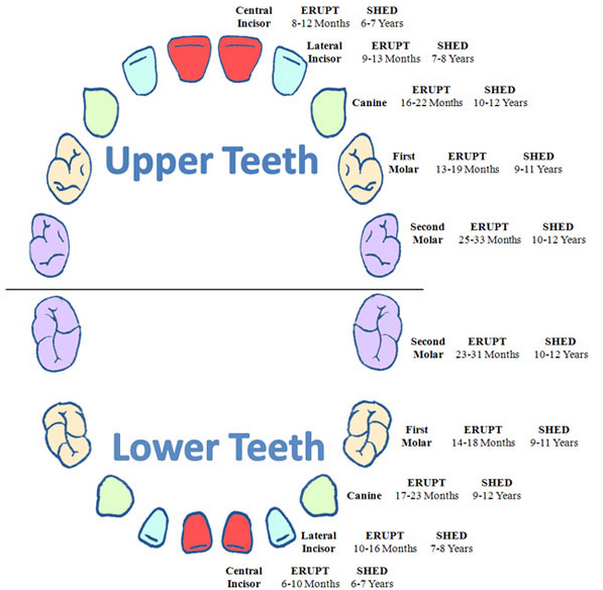
Primary Dentition News Dentagama
Universal numbering system. This is a dental practitioner view, so tooth number 1, the rear upper tooth on the patient's right, appears on the left of the chart. The Universal Numbering System, sometimes called the "American System", is a dental notation system commonly used in the United States. [1] [2]

Tooth numbering in the primary dentition (LHS) and permanent dentition
This tooth eruption chart shows when your baby's primary teeth (also called baby teeth or deciduous teeth) will erupt (come in) and fall out (shed). Remember that eruption times can vary from child to child, and this is a general guide. Upper primary teeth When tooth emerges
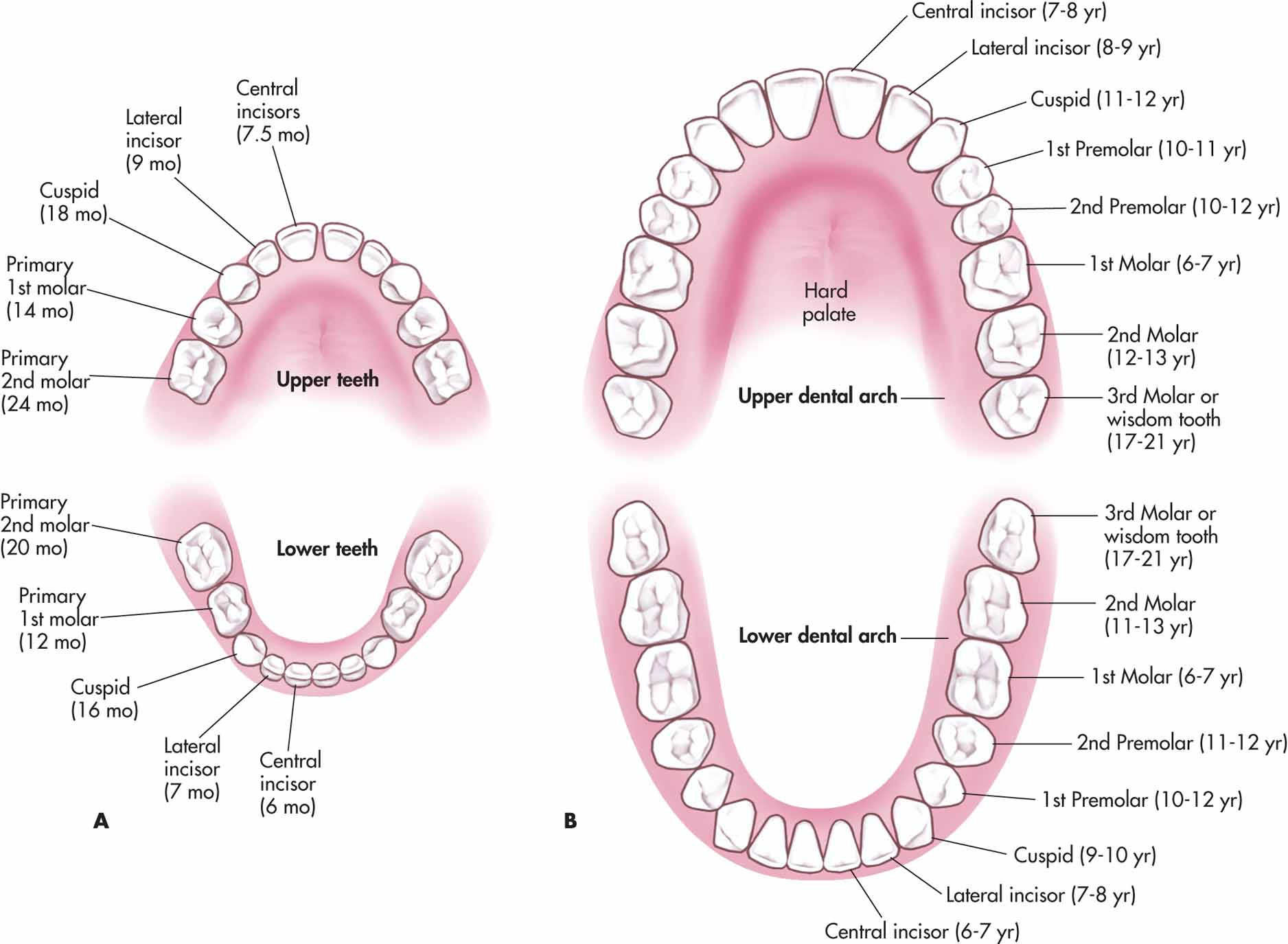
Deciduous And Permanent Teeth and Structure of a Tooth Earth's Lab
A child's mouth has 20 initial teeth, also called primary teeth, baby teeth, or deciduous teeth: Four second molars Four first molars Four cuspids (also called canine teeth or eyeteeth).
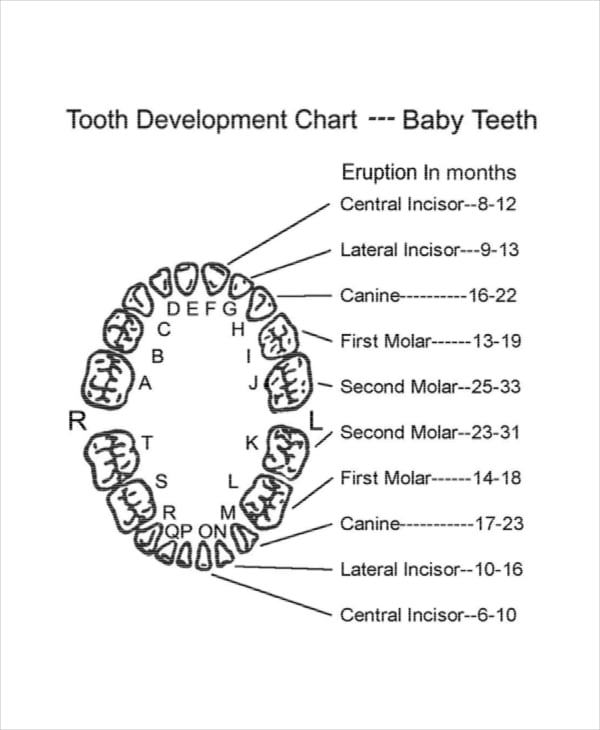
Cat Dental Chart Deciduous Cat Meme Stock Pictures and Photos
Eruption Charts Teeth vary in size, shape and their location in the jaws. These differences enable teeth to work together to help you chew, speak and smile. They also help give your face its shape and form. At birth people usually have 20 baby (primary) teeth, which start to come in (erupt) at about 6 months of age.
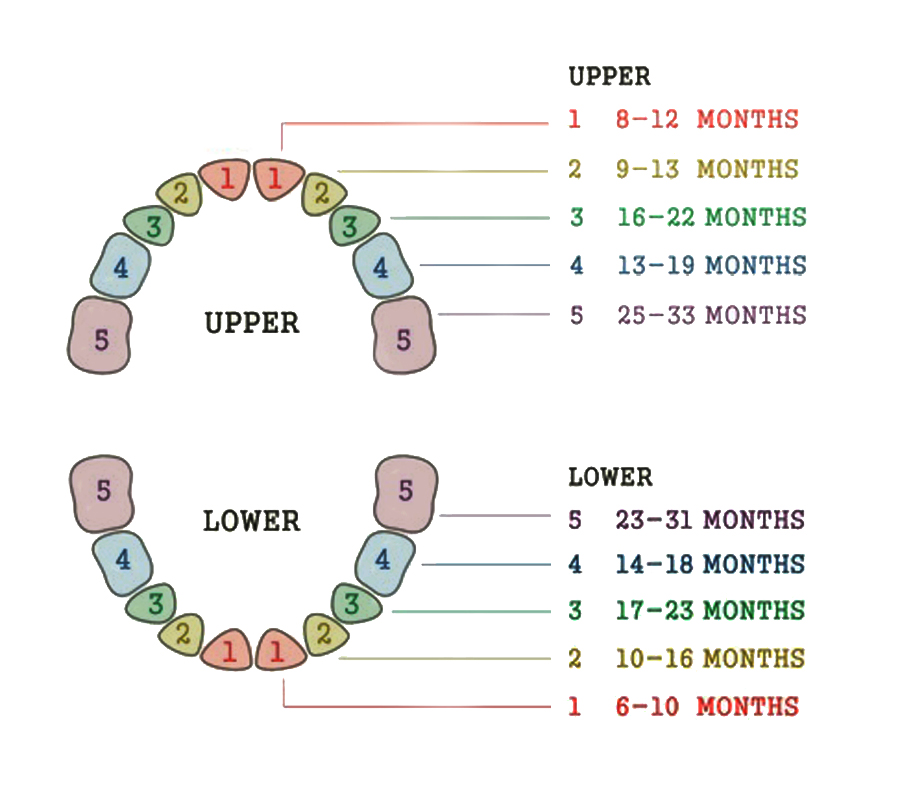
What is teething? Pediatric Dentistry Orange Park Dr. Beth Kailes
Primary (Baby or Deciduous) Teeth Names & Numbers For primary teeth, most dentists in United States use a modified version of the Universal Numbering System, with each primary tooth assigned a letter (from A to T) instead of a number. Left and Right on the teeth chart correspond to the patient's left and right respectively (patient's view).

Tooth Naming Chart
The first set out of the two sets of teeth are known as the milk, deciduous teeth or primary dentition. This dentition has 20 teeth in total with the exception of premolars. The front teeth make their appearance first. The first milk tooth to erupt is the lower central incisor at 6-8 months of age followed by the upper central incisor at 10 months.

EMS SOLUTIONS INTERNATIONAL by DrRamonReyesMD marca registrada Tooth
After the roots of the primary dentition are completed at about age 3, several of the primary teeth are in use only for a relatively short period. Some of the primary teeth are found to be missing at age 4, and by age 6, as many as 19% may be missing. 1 By age 10, only about 26% may be present. The second molars in both arches and the maxillary.
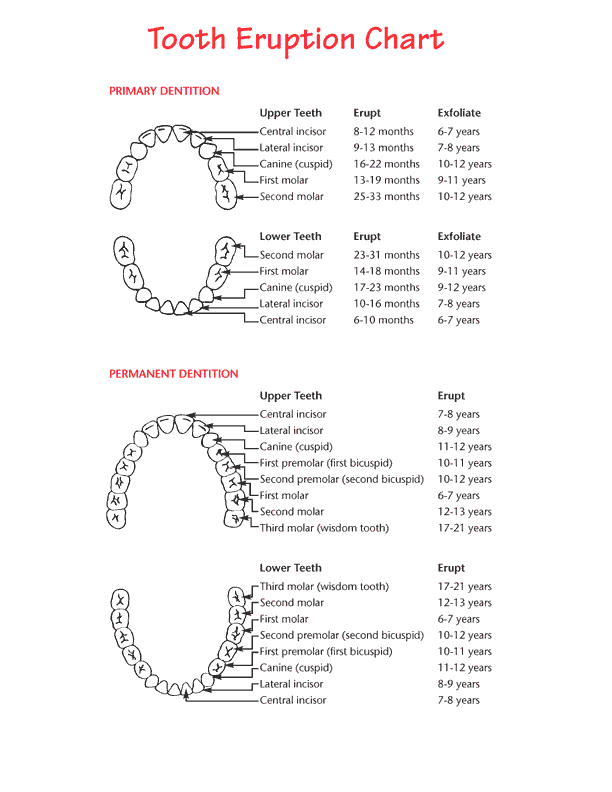
Teeth eruption chart for deciduous and permanent teeth News Dentagama
Book Online During a dental check up, your dentist is calling out tooth numbers while the assistant charts it into the computer. Which teeth is what number?
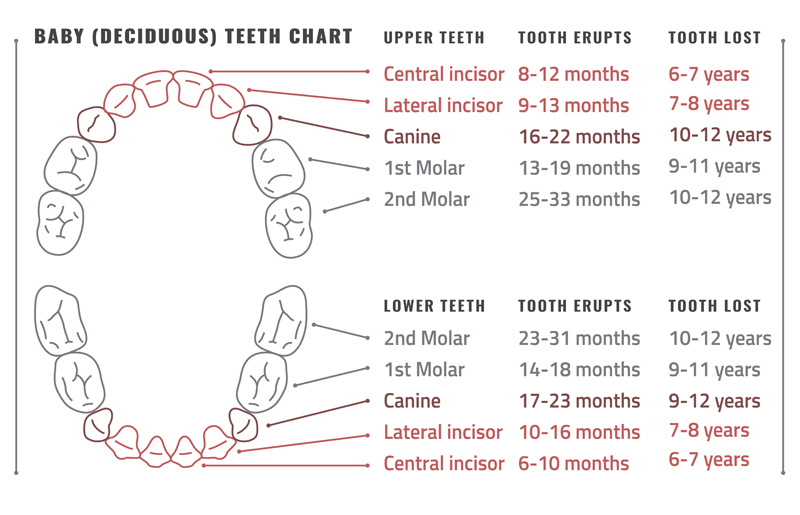
About Your Child's Teeth Hardy Pediatric Dentistry & Orthodontics
Introduction The use of the modified Triadan system has become common place in veterinary medicine. Most hospitals utilized a dental charting system as part of a patient's permanent medical record. These charts use the modified Triadan system to identify abnormalities and subsequent treatments.